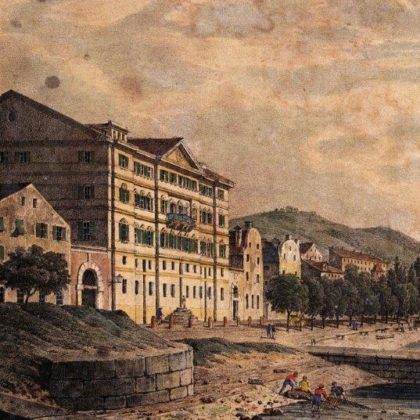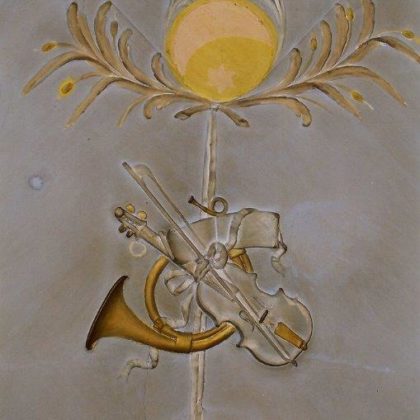In the past
The Palace that the people of Rijeka today call the Benčić Palace was built as one of the facilities of Rijeka’s sugar refinery compound and it was known as the Sugar Refinery Palace. The sugar plant marked the beginning of Rijeka’s industrial story and wrote the first chapter of the city’s industrialization, after which nothing was the same again. The processes launched by the sugar plant reached their pinnacle in mid-19th century, when Rijeka accounted for as much as one half of industrial production in Croatia.
The sugar refinery was established in 1750 by a Dutch-based company Arnoldt & Co., which opened its first plant in the part of the city known today as Mlaka, which at that time formed the western outskirts of Rijeka. The refinery soon started to spread onto new locations in the city. One of these locations was the area of today’s Benčić Palace. In the past, this was a coastal part suitable for sailing ships to drop their anchors and unload their cargo of raw sugar right in front of the refinery’s gate. At the time, the refinery had seven hundred workers. In 1826, the refinery was shut down; however, the factory compound soon began to fulfil new purposes. The Hungarian army used it from 1832 to 1848 as military barracks, and in 1851 it was turned into a tobacco factory. It didn’t take long for the factory to evolve into the largest tobacco processing plant in the Austro-Hungarian Empire: in the 1860s, it employed as much as 2000 workers, most of whom were women. Finally, from 1945 to 1998, the factory compound housed the Factory of Engines and Tractors Rikard Benčić.
The well-kept Sugar Refinery Palace still bears witness to this rich economic history and it represents the largest Neo-Baroque building on the east coast of the Adriatic. The well-known parts of the compound are T-building and H-building, which originate from the tobacco factory period and they were named after their ground plan view, which formed letters T and H. The Sugar Refinery Palace was listed as a protected cultural heritage in 1970.











